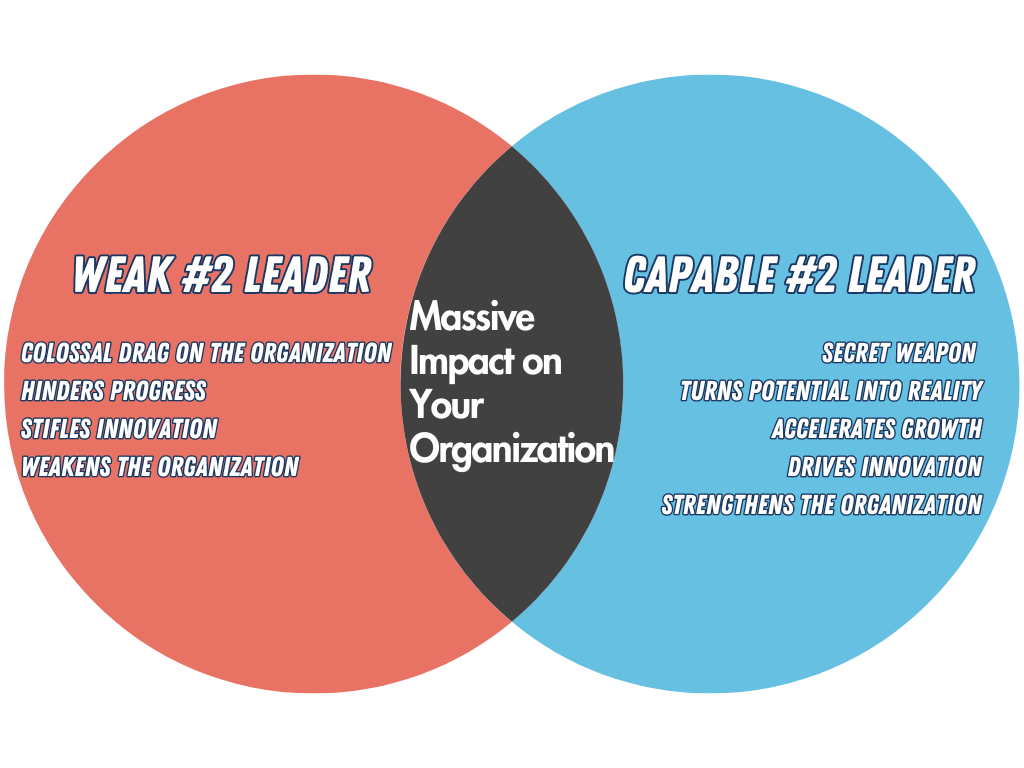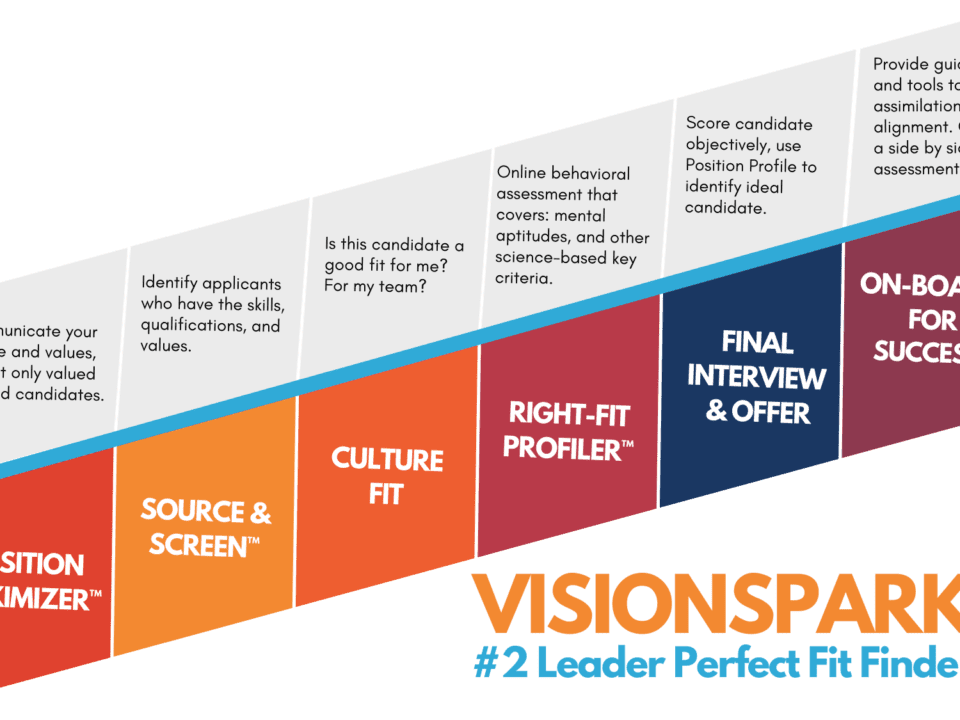
Did You Hire the Wrong #2 Leader? 5 Red Flags That Can Help You Tell
August 12, 2024
What’s in a People Plan?
October 25, 2024Your COO (#2 Leader) is pivotal to your organization’s success. They either strengthen the entire operation by connecting the pieces and providing clarity, or they perpetuate chaos and confusion. Essentially, they can be the vital missing link that holds everything together or the weak link that undermines your business.

How Does a COO Strengthen an organization?
In any organization, the role of the #2 leader— unsure what is a #2 leader in business? Read our article is pivotal. This individual can either be the missing link that propels the company forward or the weak link that drags it down. The potential consequences of having a strong or weak #2 leader cannot be overstated.
When you have a top #2 leader on your team, it’s like adding a turbocharger to your business. Your company can accelerate growth, outmaneuver competitors, and achieve unprecedented heights. A capable #2 leader is the secret weapon that turns potential into reality. Conversely, a weak link in this critical position can be a colossal drag on your organization, hindering progress and stifling innovation.
The Missing Link: Qualities of a Powerful #2 Leader
Alignment with Vision and Strategy
A powerful #2 leader seamlessly aligns with the leader’s vision and strategy. This alignment fosters a unified direction, ensuring that every decision and action taken by the team serves the company’s overarching goals.

Consider Apple during Steve Jobs’ tenure. Jobs set the vision with his high standards in design and functionality. After his passing, Tim Cook, as COO and later CEO, maintained this vision by focusing on operational excellence. Cook expanded Apple into services like Apple Music and Apple TV+, diversifying revenue and solidifying Apple’s market position. His ability to turn Jobs’ vision into tangible results highlights the critical importance of alignment in a second-in-command leader.
Bridge Between Leader and Team
A successful #2 leader acts as the vital bridge between the leader and the team, effectively communicating and building trust on both sides. This role requires a delicate balance of advocating for the leader’s vision while addressing the team’s needs and concerns.
Tips to Build This Skill:
- Active Listening: Hold regular one-on-one meetings with team members to gauge their sentiments and concerns.
- Transparent Communication: Clearly articulate the leader’s vision and ensure it’s understood at every level.
- Feedback Loops: Implement regular feedback mechanisms to ensure alignment and address any concerns early.
Strong Decision-Making and Execution
One of the most critical qualities of a decisive #2 leader is the ability to make sound decisions and drive projects to completion. This involves understanding strategic objectives and having the tactical know-how to execute them effectively.
Ready to find your missing link?
The Weak Link: Signs of a Troubled #2 Leader
Lack of Alignment
When a #2 leader lacks alignment with the leader’s vision, it creates confusion and disengagement across the organization. This misalignment often results in conflicting priorities, stalled initiatives, and a general sense of directionless effort within the team.
The decline of Blackberry can be partly attributed to misalignment between the top leaders on the company’s direction. The leadership’s failure to adapt to the rapidly changing smartphone market, coupled with a dismissive attitude toward customer preferences, led to the company’s decline.
Undermines Leader or Team
A #2 leader who exhibits negative behaviors, such as undermining the leader or the team, can severely damage team spirit and morale. This behavior can manifest in subtle ways, such as consistently challenging the leader’s decisions in front of the team or creating an environment of mistrust and competition rather than collaboration.
Tips to Identify and Address These Behaviors:
- Observation: Be vigilant in observing interactions within the team.
- Feedback: Seek feedback from team members on their interactions with the #2 leader.
- Early Intervention: Address issues early through direct conversation, coaching, or reassessing the leader’s fit.
Poor Decision-Making and Execution
Poor decision-making and execution by a #2 leader can derail projects, waste resources, and ultimately hinder the organization’s progress. This often manifests in missed deadlines, budget overruns, and a general inability to deliver on promises.
Signs to Watch For:
- Missed Deadlines: Frequent delays in project timelines.
- Budget Overruns: Consistently exceeding budgetary constraints.
- Failed Projects: Repeated failures to achieve project objectives.
Identifying and Nurturing Your #2 Leader
Finding and developing the right #2 leader requires careful consideration and a proactive approach. Here are some practical steps to guide you:
- During the Hiring Process: Evaluate potential #2 leaders not only on their skills and experience but also on their alignment with the company’s vision and values. Use behavioral interview techniques to assess their decision-making process and ability to execute.
- Skill Development:To invest in leadership development programs focusing on strategic thinking, communication, and decision-making skills, consider leveraging resources specifically designed for #2 leaders. One such resource is offered by our strategic partner, which provides tailored support for seconds in command. Encouraging your #2 leader to build strong relationships with the leadership team and the broader organization is crucial, and this resource page (LINK TO: https://visionsparksearch.com/resource-for-seconds/) offers valuable tools and insights to help them excel in their role.
- Succession Planning: Involve your #2 leader in succession planning to ensure they are prepared to step up if needed. This involvement will also help them understand the long-term vision of the company and how they can contribute to its success.
Want to know more about how VisionSpark does this? Check out our Proven Process!
Closing the Leadership Gap
The impact of a strong #2 leader on your organization cannot be overstated. Whether they serve as the missing link that propels your company to success or the weak chain that holds you back, their influence is significant. By identifying the right qualities and addressing potential issues early, you can ensure that your #2 leader is a powerful asset to your organization.




